"Secondary forests are a point of hope"
On World Wildlife Day 2021, Daisy Dent talks about the surprisingly bright science of how forests can come back from the brink
News around global forests is rarely positive. Forests are home to 80% of all terrestrial wildlife and our largest "carbon sink" for extracting global CO2, yet they have been under persistent pressure across human history. Now they are at the crossroads of the multiple planetary crises we currently face, from climate change to biodiversity loss. As a researcher studying deforestation of tropical rainforests, Daisy Dent enjoys a refreshingly positive viewpoint over the landscape of deforestation. Her work documenting changes in the composition of trees and birds over forest succession has revealed how fast degraded forests can regain species richness and complex structure. Last year, she moved from the University of Stirling to the MPI-AB as a Humboldt Research Fellow.
To bring awareness to forests on World Wildlife Day 2021, we talk to Daisy about her past work on forests in Panama and Borneo, and her Konstanz plans of bringing her forest restoration science to animal tracking’s Big Data moment.
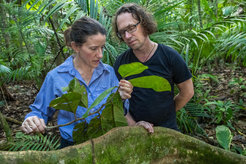
What are your plans for combining forest research with animal tracking at the MPI-AB?
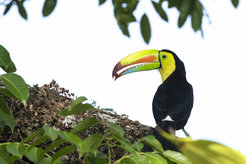
While at the MPI-AB I plan to investigate movement of frugivorous animals and seed dispersal across disturbance gradients in degraded tropical landscapes, and to understand how animal mediated seed dispersal shapes secondary tropical forest succession in these contexts. Biotic interactions underpin the integrity of lowland tropical forests, and fruit-eating animals are responsible for effective reproduction of >70% of tropical trees. Seed dispersal by birds and mammals plays a critical role in determining which tree species recruit into isolated regenerating forests, while recruitment of fruiting trees into the broader landscape will, in turn, provide foraging sources for frugivores. Animal tracking data will enable us to map which areas within a landscape will regenerate unassisted, and where intervention may be critical to meeting restoration and conservation targets. We will be using existing tracking data of frugivores from movebank.org - there is already quite a lot of data on frugivore movement in these archives but most of this is from continuous forests. Bats and birds are key dispersers in degraded and fragmented forest landscapes, transferring seeds from fruiting trees to regeneration sites. My PhD student, Adam Fell, is tracking frugivorous birds and bats in degraded agricultural landscapes in Panama to investigate how movement patterns relate to forest cover and structure. I will be working with Meg Crofoot, who is my collaborator at MPI-AB, and I also hope to work with Dina Dechmann and Kamran Safi, on bat tracking and data analysis, as the project develops.
Have you had any recent rainforest adventures?
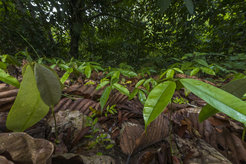
In 2019, we travelled to the island of Borneo to witness the largest mast fruiting event for a century on the island. Not surprisingly, this event is related to the work of animals in the system. In tropical forests, while many animals eat tree fruits and disperse the seeds in their faeces, some animals are seed predators and feed on the seeds themselves. Rodents and wild pigs, in particular, love to feast on palm nuts and the large seeds of some canopy trees. In Southeast Asia the forests have evolved a strategy to enable some seeds to escape. Here, the trees produce no seeds for years, deliberately starving the seed predators. Then, in a single year, hundreds of forest tree species simultaneously produce huge crops of fruits, satiating the seed-eaters so that some seeds survive to grow into seedlings and eventually adult palms or trees. These fruiting events are called “mastings” and typical occur only every 7-10 years in association with rare climatic triggers, such as a severe drought. One of my PhD students has been following the fate of the seedlings that recruited following this incredible masting event, in undisturbed and logged forests that are either regenerating naturally or have been restored.
You study how forests regenerate. What have you learned about how these degraded secondary forests recover?
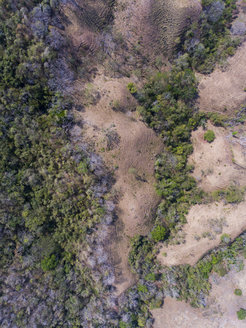
Secondary forests that grow back after tropical forest clearance now comprise more than 50% of the world’s remaining tropical forests. These forests regrow on deforested land, often after farmland has been abandoned, and can rapidly accumulate species richness and complex structure. Recent studies in Neotropical secondary forests have shown that, on average, tree species richness can recover to 80% of old-growth values within 20 years, and aboveground biomass can recover to 90% of old-growth values in just over 60 years. These figures illustrate that secondary forests can play an important role in conservation of tropical forest species and ecosystem services, but not all aspects of forest structure and diversity recover on these short timescales. Species composition is typically the last aspect of secondary forests to recover and many studies predict recovery to old-growth species composition may take several centuries. Generally, I find secondary forest research is a point of hope in this era of rather bleak environmental news.
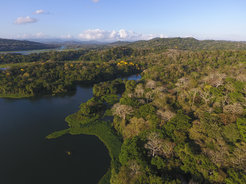
You had a paper in Science last year showing that long-lived tropical trees play an outsized role in carbon storage. What does the future look like for tropical forests under climate change?
In this study we developed a model that predicts change in tropical forest biomass and tree species composition using five different ecological strategies. This allowed us to look at how tropical forests may change in the coming decades, and even centuries. What is interesting about this study is that we accurately predicted change in the composition of a tropical forest that is home to many hundreds of tree species, by grouping them into just five functional groups or ecological strategies. Tropical secondary forests could play a critical role in climate mitigation, by taking up atmospheric carbon and binding it into organic matter. The model presented in this study accurately predicts changes in biomass and carbon in regenerating secondary forests, suggesting that a limited number of ecological strategies are sufficient to describe the recovery of tree communities following disturbance.
Can anything be done to boost forest regeneration, such as active planting of key species?
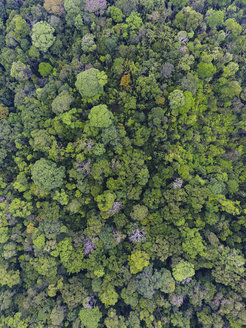
This forest in central Panama has not been disturbed for more the 600 years. The diversity of tree species and age classes can be seen from the forest canopy.
Tropical forest regeneration is a complex process regulated by biotic, abiotic and anthropogenic factors that can be difficult to predict. Tropical human-modified landscapes are dynamic mosaics of multiple land-uses including remnant and regenerating forest fragments, pasture, and agriculture, and predicting rates of forest succession can be particularly challenging in these contexts due to variation in forest cover across the landscape, distance to undisturbed forest, ongoing disturbance regimes etc. Most secondary forest research has been conducted in the Neotropics, where we find that forests regenerate most rapidly in sites close to existing forests and on land that has not been intensely or extensively cultivated. Some sites may not naturally regenerate to form diverse and structurally complex forests as they are too far or too isolated from seed sources and dispersers, and in these sites, restoration may be needed to assist and accelerate succession. Restoration management often involves cutting lianas (woody vines) to reduce competition with trees and enrichment planting with seedlings of old-growth forest species. These restoration techniques are extensively used in Southeast Asian forests and we are investigating recovery of tree and seedling communities in restored and naturally regenerating logged forests in Borneo.





